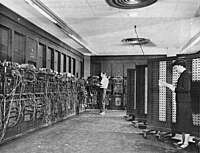History of programming languages

Okay kiddo, let's talk about the history of programming languages! Have you ever played with blocks or Legos to build something? Well, programming languages are like building blocks for a computer to understand and follow instructions.
A long time ago, people started using punch cards to give instructions to computers. It was like a big stack of index cards with holes that the computer could read. But it was hard to create a program this way because every instruction had to be punched into the card one by one.
Then, in the 1950s, people started to create programming languages to make it easier for humans to create programs. One of the first programming languages was called Fortran, and it was used for doing math and scientific calculations. It made it easier to write long equations and perform calculations with them.
As time went on, new programming languages were created for different purposes. For example, COBOL was designed for business applications like banking and accounting. It made it easier to keep track of large amounts of data.
Then in the 1970s, a new programming language called C was created. C was used to write operating systems and is still used today. It was also the inspiration for another programming language called C++, which added even more features like object-oriented programming.
In the 1990s, another programming language called Java was created. Java made it much easier to write programs that could run on multiple computers and operating systems.
Today, there are many different programming languages, each with their own strengths and weaknesses. Some are good for web development, others for scientific research, and others for creating mobile apps. It's like having different tools in a toolbox, you need the right tool for the job!
A long time ago, people started using punch cards to give instructions to computers. It was like a big stack of index cards with holes that the computer could read. But it was hard to create a program this way because every instruction had to be punched into the card one by one.
Then, in the 1950s, people started to create programming languages to make it easier for humans to create programs. One of the first programming languages was called Fortran, and it was used for doing math and scientific calculations. It made it easier to write long equations and perform calculations with them.
As time went on, new programming languages were created for different purposes. For example, COBOL was designed for business applications like banking and accounting. It made it easier to keep track of large amounts of data.
Then in the 1970s, a new programming language called C was created. C was used to write operating systems and is still used today. It was also the inspiration for another programming language called C++, which added even more features like object-oriented programming.
In the 1990s, another programming language called Java was created. Java made it much easier to write programs that could run on multiple computers and operating systems.
Today, there are many different programming languages, each with their own strengths and weaknesses. Some are good for web development, others for scientific research, and others for creating mobile apps. It's like having different tools in a toolbox, you need the right tool for the job!
